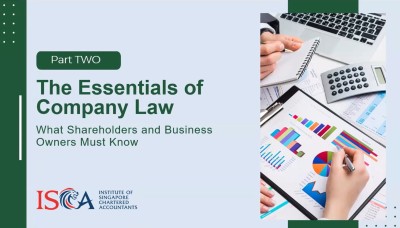Synopsis:
We will look at Shareholder Remedies over 2 separate parts. Part 1 focuses on situations where the legal wrong is done to the company (so the shareholder is only indirectly affected). Part 2 will concentrate on direct wrongs or harm suffered by a shareholder (the latter are often referred to as “personal wrongs”). This division may seem at first sight to be overly technical, since in both cases the shareholder is detrimentally affected and may wish to seek a remedy. Further, it is not always straightforward to identify on which side of the line some wrongs fall. However, the distinction flows from the fundamental principle of separate legal personality and thus it is necessary to consider the rules in this bifurcated way.
But what happens when the legal wrong to the company is committed by one or more directors? The obvious example of such a wrong is a director’s breach of duty. This is a potentially awkward situation, as there is a real risk that the board of directors would not bring an action (ie, lawsuit) to enforce the company’s rights. In the first part, we examine the rules surrounding this rather perplexing topic. You will note that there are two regimes which govern this situation: one at common law, and the other under s 216A. In practice, however, the statutory regime under s 216A is of much greater significance as it is a broader and more plaintiff-friendly, and it is those rules that we will concentrate on (see 4 below). However, we first need some understanding of the common law rules so as to appreciate the context in which s 216A applies.
We will look at Shareholder Remedies over 2 separate parts. Part 1 focuses on situations where the legal wrong is done to the company (so the shareholder is only indirectly affected). Part 2 will concentrate on direct wrongs or harm suffered by a shareholder (the latter are often referred to as “personal wrongs”). This division may seem at first sight to be overly technical, since in both cases the shareholder is detrimentally affected and may wish to seek a remedy. Further, it is not always straightforward to identify on which side of the line some wrongs fall. However, the distinction flows from the fundamental principle of separate legal personality and thus it is necessary to consider the rules in this bifurcated way.
But what happens when the legal wrong to the company is committed by one or more directors? The obvious example of such a wrong is a director’s breach of duty. This is a potentially awkward situation, as there is a real risk that the board of directors would not bring an action (ie, lawsuit) to enforce the company’s rights. In the first part, we examine the rules surrounding this rather perplexing topic. You will note that there are two regimes which govern this situation: one at common law, and the other under s 216A. In practice, however, the statutory regime under s 216A is of much greater significance as it is a broader and more plaintiff-friendly, and it is those rules that we will concentrate on (see 4 below). However, we first need some understanding of the common law rules so as to appreciate the context in which s 216A applies.
Part 2 will cover the following areas:
Intended For:
Competency Mapping:


